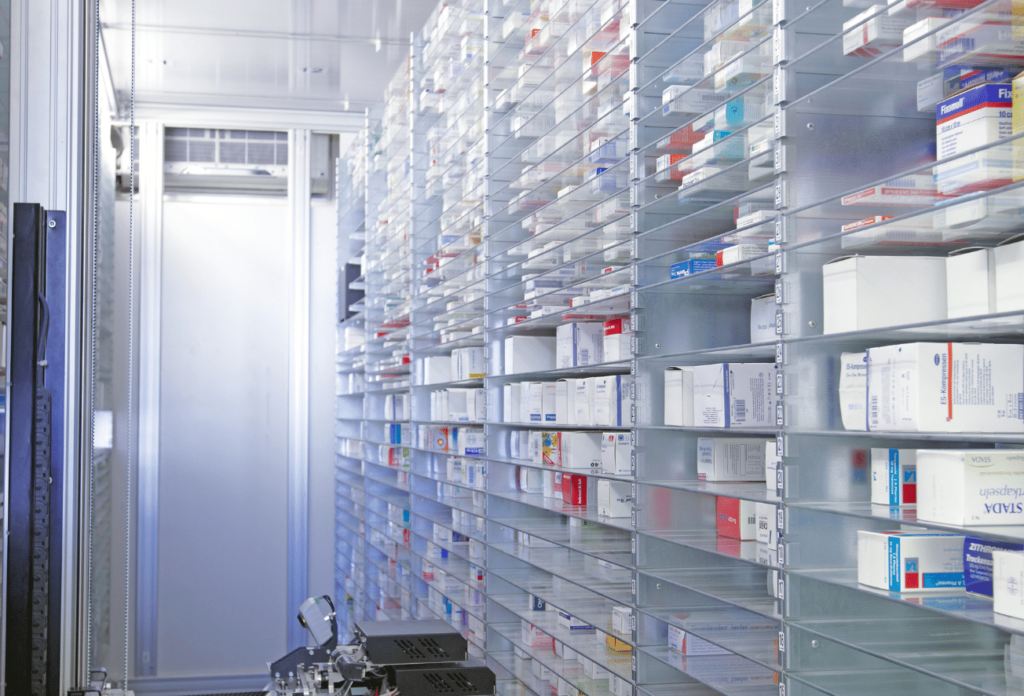The Role of Pharmacy Automation in the Healthcare Ecosystem
November 26th, 2020
Pharmacy automation provides many benefits to pharmacies. From pill counters to robotics, it’s changing the pharmacy business model for the better.

Manual medication dispensing is rife with challenges. It’s tedious, repetitive, and error-prone. However, pharmacy automation changed the game for pharmacy operations. By using technology, pharmacists and their staff can spend their time on more high-level work to improve patient outcomes.
What role does pharmacy automation plan in the healthcare ecosystem? It’s critical to dispensing and care management. Find out why.
What Is Pharmacy Automation?
Pharmacy automation describes any task that leverages technology to handle and distribute medications. Robotics and pill counters are the most common forms of automation. It enables pharmacies to streamline workflows and reduce the risk of errors. Its benefits often include boosting prescription volume and efficiency.
Pharmacy Automation Tools in Demand
Pharmacy automation is a fast-growing segment. According to a new report, experts predict the industry will grow at a CAGR of 8.35% and be worth $8.03 billion by 2027. This growth is due in part to the proliferation of a large majority of consumers taking daily prescriptions.
According to a study by Georgetown University, 131 million people, representing 66% of U.S. adults, take prescription drugs. That number is higher for those aged 65 to 79 at 87%. They average 20 prescriptions per person. Those under the age of 65 take three to six drugs, and only 53% of this population use prescribed medications.
That’s a high volume of patients and prescriptions. As the population ages and lives longer, more people will begin to become part of these population groups.
Pharmacy Automation Is Now Affordable for All
In the infancy of pharmacy automation, adopters tended to be central fill facilities and large health systems, dispensing by the thousands every day. The latest generation of automation tools is more accessible. They’ve become extremely affordable, enabling community pharmacies to use it.
It Doesn’t Replace Jobs
Using robotics for dispensing and filling isn’t a case of technology taking over jobs. Rather, most pharmacies that employ reallocate resources to other areas. The ability to move people from repetitive work means they can focus on bigger picture things like consulting more with patients and expanding services, such as providing vaccines or programs for those with chronic diseases like diabetes. It allows the pharmacy staff to provide more patient-centered services.
What Types of Meds Should You Automate?
If you’re going to use robotics in your pharmacy, you’ll need to consider the “right” drugs for this capability. Pill counters are the low-tech version of automation. Robotics are more sophisticated, as they fill, label, and cap. Robots can fill every script, so maximize the potential by using it for your top 100 products that you dispense.
Be Aware of Regulations
In some states, you can’t automate the filling of controlled substances. Understand the state regulations on what you can and cannot automate. In most cases, you’ll be automating prescriptions with high volumes that don’t fit in the controlled category.
Are Automation Tools Customizable?
There are some automation systems available to customize to fit your specific needs and workflows. The type of pharmacy you have may inform this (i.e., specialty pharmacy, mail order, etc.). You may also wish to have a solution that integrates with your pharmacy software or an EHR. By doing this, you can reduce paperwork and back and forth with providers. It also provides price transparency.

Automation Is Accelerating Changing Pharmacy Business Models
Pharmacy is evolving. It’s always been on the frontlines of public health, often being a resource where no others exist. As pharmacy business models continue to change, automation is helping shape both dispensing and care management.
For dispensing, it’s all about speed and efficiency. In this use case, automation reduces costs, errors, and wait time.
With the support of automation, care management becomes more feasible. Pharmacists focus more attention on complex patients and preventative services like immunizations and clinical testing, including COVID-19 tests.
What’s the Future of Pharmacy Automation?
2020 has been a very disruptive year for healthcare, pharmacy included. In a pandemic, there’s a strain on resources, so it seems practical that automation can relieve some of this. With technology becoming increasingly sophisticated, innovations are certainly on the horizon. What are your thoughts on pharmacy automation predictions? Share them with us!